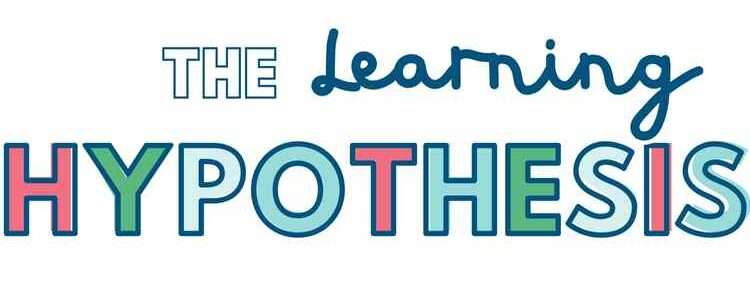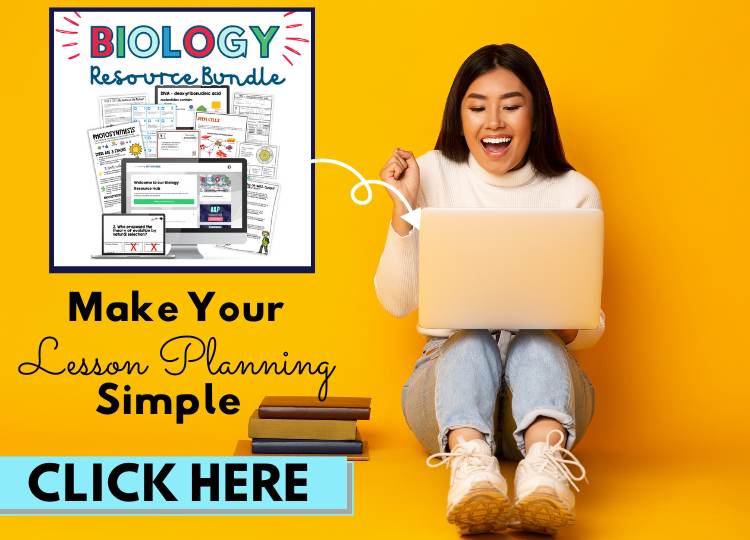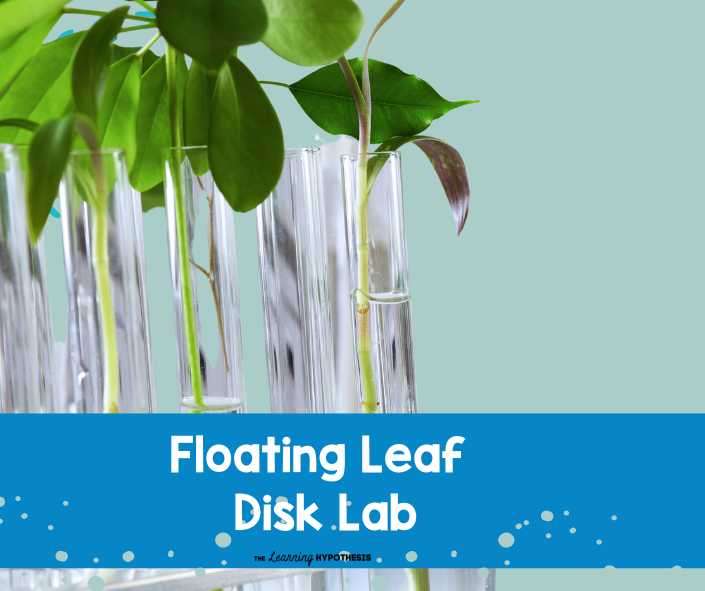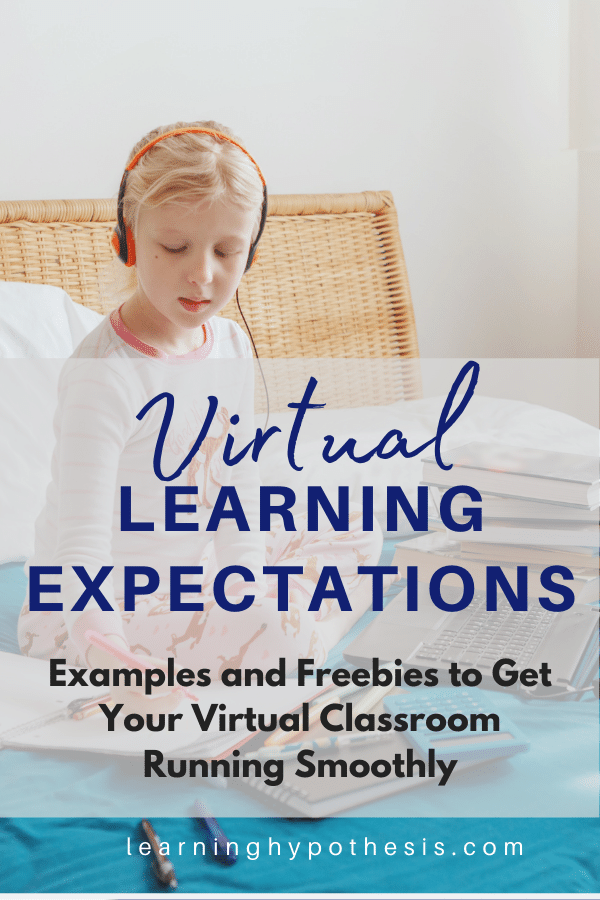Biology Lesson Plans
When I started my teaching career, I was literally told to go to the state website and print off the standards. That was it. No packet of biology lesson plans. I was lucky enough to have a textbook that I got a few days before school started, but as we all know a textbook isn’t the be all end all. I struggled and wish there had been more teachers sharing what and how to approach biology.
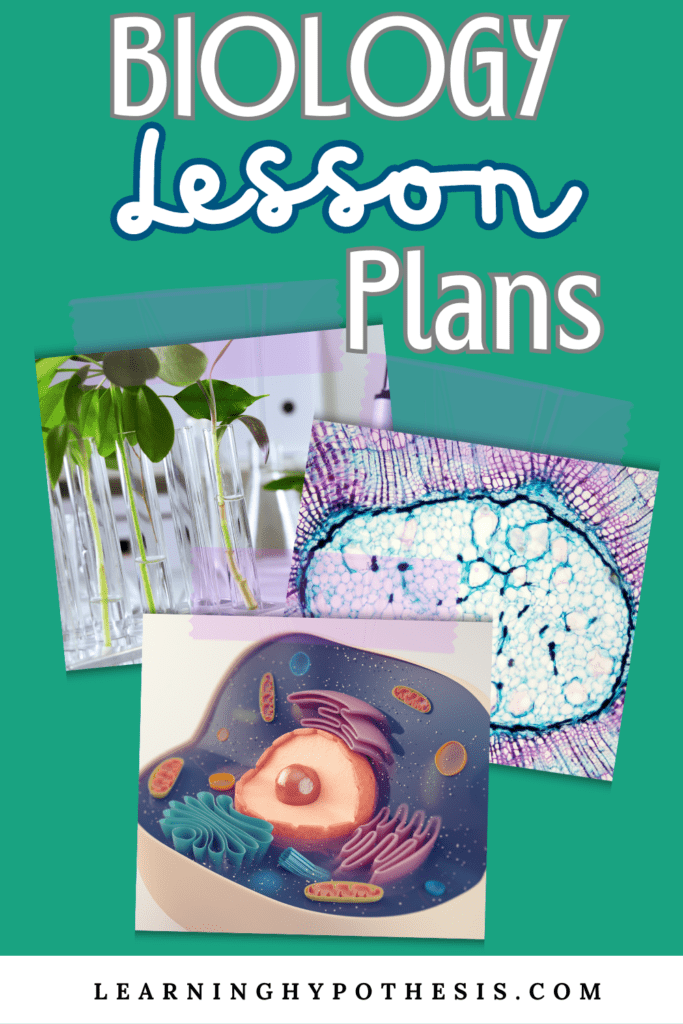
That is why I’m here. To share my experience after 20 years of teaching. Now keep in mind that resources and ideas are suggestions – at the end of the day you’ll need to find what works for you. From the tiniest cells to the most diverse ecosystems, I’ll share my approach to biology topics and my reasoning for the approach I use. No need to reinvent the wheel. So, buckle up, put on your lab coats, and get ready for support from your new teacher bestie – that’s me. Biology, here we come! Looking for Biology Teaching Resources? I’ve got something just for you. CLICK HERE for All My Biology Teaching Resources.
>>>Grab my Biology Scope & Sequence<<<

Table of Contents
You can click any link in the below to be taken directly to this section of the post.
- Creating Biology Lesson Plans
- Biology Topics
- Introduction to Biology
- Chemistry of Life
- Cells
- Cell Transport
- Cell Cycle & Cancer
- DNA & RNA
- DNA replication
- Meiosis
- Protein Synthesis
- Mendel and Punnett Squares
- Other Inheritance Patterns
- Mutations, Pedigrees, and Karyotypes
- Biotechnology
- Ecological Levels and Dichotomous Keys
- Biogeochemical Cycles
- Energy Flow in Ecosystems
- Enzymes
- Photosynthesis
- Cellular Respiration
- Darwin and Natural Selection
- Isolation, Speciation, and Extinction
- Evidence of Evolution
- Ecology: Niche, Competition and Predation
- Population Ecology and Growth Curves
- Human Impact
- Succession
- My Biology Sequence
- Hands-on Activities
- Technology
- Review
- Critical Thinking
- Adapting and Modifying
- Assessment
Creating Biology Lesson Plans
I’m here looking to support high school biology teachers, but many of the ideas I share can be adapted for middle school or even higher education. I’ve taught in all three. When I think about creating lessons plans for biology, I start with the standards and work backwards. If I know where I want to go, it helps me figure out how I want to get there.
This is not a one and done thing. I’m constantly revising. Because student needs are different, I try to have lots of options for each of the biology topics. I think about learning and study strategies that support learning. The strategies I want to incorporate are :
- Retrieval Practice: Self-Testing
- Interleaving: Creating Patterns
- Concrete Examples: Use Examples
- Dual Coding: Use Visuals and Text (Adding auditory is good too)
- Elaboration: Expand the Idea
- Spaced Practice: Don’t Cram
This can be done using 5e lessons or by establishing patterns and routines.
Grab My Biology Lesson Templates and Example (Characteristics of Life)
My typical units loosely follows a 5e instructional model.
I like to include an engagement activity to introduce them to the topic. This might be a demonstration, a quote, a discussion or even a video. Follow through by asking some questions and having a discussion. This doesn’t need to be long or drawn out. The purpose of an engagement activity is to spark curiosity. This activity should focus on creating interest and excitement for your students and give you insight into what they already know (or think they know) about the topic.
Examples of Engagement Activities:
- Bell Work
- Video
- Current Events
- Quote
Engagement Activity:
- Generates interest
- Gives you information about their background knowledge
Exploration Activity
Exploring the activity creates more understanding and continues to activate background knowledge. During this time the students will use and develop creative thinking skills. Utilizing observation, data collection, and begin to make connections. I like to use learning stations and lab activities during this stage to get hands-on experience.
Exploration Activity:
- Gives students a chance to generate their own understanding
- Provides time to make connections to background knowledge and the new topic
Explanation Activity
The idea behind the explanation phase is to give students an opportunity to explain what they are learning. For secondary science, that often involves teacher led instruction to cover difficult concepts and vocabulary.
We spend time discussing their experiences in the exploration activities and beginning to describe it in a meaningful way. I like to have some discussion and introduce vocabulary during this time. For example, if we are exploring thermal transfer and the students have been working through the a solar water heater challenge then as they are talking about what they saw I might explain that is convection, radiation, etc.
I like for students to have something to reference for homework, in class work, and to prepare for exams. I love to use graphic notes when I am explaining and clarifying. This provides dual encoding which helps students retain the information. I make each sheet in 4 varieties: complete, highlighted, fill-in-the-blank, and open ended (headings and images). This makes it easy to adapt to the learner and the circumstances going on. Class cut short because you have half a day? Use the completed notes instead.
Explanation Activity:
- Students explain what they observed in exploration using evidence based reasoning
- Teacher provides additional information to clarify and solidify concepts
Elaboration Activity
The activities in this phase of the learning cycle should encourage students to apply their new understanding of concepts, while reinforcing new skills.
Examples of things I’ve used in the past as elaboration activities:
- problem based learning
- short term research projects
- case studies
- scenarios sorts
- escape rooms
Elaboration Activity:
- The goal of this phase is to help develop deeper and broader understandings of the concepts.
- You may see concepts that require re-teaching. This method is designed to flex with the students’ needs and just take the time to explain more.
Evaluation Activity
Assessment is ongoing throughout this process. I build in to lots of checks for understanding throughout my lessons. At the end, I like to have an exam because it prepares students that will be taking end of course testing and move on to the college classroom. I also will usually have alternative assessment opportunities for units that include projects, presentations, papers, and experiments.
Evaluation Activity
- Students demonstrate their mastery of the concept
- Present any additional areas that may need re-teaching
My daily lesson plans follow a routine.
Let me start by saying this is not a rigid set up. You may move back and forth between the types of activities. This might take several class periods to accomplish. Unfortunately, there are standards to be met and time constraints (as well as the other realities of teaching) that keep this from being perfect. My simplified version for each topic includes vocabulary, identification, application, review, and assessment. This is done with an eye towards the most helpful study strategies: retrieval practice, interleaving, concrete examples, dual coding, elaboration, and spaced practice.
I try to make sure there is a good mix of activities each time I have my students. This helps them stay focused. I like to be able to switch up what we are doing every 10-15 minutes. This strikes a balance between presentation (teacher led) and doing (student-led) classroom time. This helps me have more time to work individually with students and makes differentiation easier too.
My typical routine looks something like this:
- Prep Activity to Get Students Started. Usually I pick one of the following: a bellringer to review, new vocabulary activity, or a connection question
- Go over homework or assignments
- Introduce new topic (try to keep to 10 minutes or less).
- Apply information from new topic
- Review and make sense of what we just did
- Assignment
Grab the Scope & Sequence I use with Resource Ideas & MORE.
Explore the Topics of Biology
Biology Basics
Introduction to Biology: homeostasis, characteristics of life, scientific method, branches of biology, levels of organization, STEM careers
Grab my Characteristics of Life Lesson Plan
Chemistry of Life: atoms, ionic and covalent molecules, polar/non polar, hydrophobic/hydrophilic, properties of water, pH, biomolecules
Cells
Introduction to Cells: cell theory, prokaryotic/eukaryotic, plant/animal cells, organelles, cell differentiation
Cell Transport: structure and function of the cell membrane, passive/active transport, osmosis and tonicity
Cell Cycle: chromosomes, mitosis, regulation and cancer
Genetics
DNA & RNA: structure, basic function, DNA replication
Protein Synthesis: central dogma, transcription, translation, regulation
Meiosis: gamete formation, haploid/diploid, process of meiosis, mitosis vs. meiosis
Heredity
Mendelian Genetics: Gregor Mendel, genotypes vs. phenotypes, homozygous vs. heterozygous alleles, Mendel’s Laws and Punnett squares
Other Inheritance Patterns: incomplete dominance, co-dominance, multiple alleles, polygenic inheritance, linked genes and sex-linked traits
Mutations and Pedigrees: causes and types of mutations, common genetic disorders, pedigrees and karyotypes
Biotechnology: genetic engineering and societal implications
Ecology Part 1
I divide my ecology units into two parts and teach evolution in the middle.
Introduction to Ecology: levels of ecological organization (biosphere to species), biotic and abiotic factors, review of taxonomy, dichotomous keys and biomes
Biogeochemical Cycles: water cycle, carbon cycle, nitrogen cycle, biotic factors in nutrient cycling and human impact
Energy in an Ecosystem: trace the flow of energy and matter in an ecosystem, autotrophs vs. heterotrophs, producers and consumers, food chains and food webs, trophic levels and pyramids, biomass and biomagnification
Energy in Living Systems
Enzymes and reactions
Photosynthesis
Cellular Respiration
Evolution
Introduction to Evolution: Darwin, principles of natural selection, artificial selection, fitness of a species, genetic drift and gene flow, modes of selection
Evolution in Action: speciation and isolation, extinction, rates of evolution and types of evolution
Evidence of Evolution: fossil record, comparative anatomy and embryology, biogeography, molecular biology and observed change
Ecology Part 2
Ecological Relationships: niche, predation, competition and symbiosis
Population Growth Patterns: exponential vs. logistic growth, carrying capacity, limiting factors and survivorship curves
Human Impact: climate change, carbon footprint, alternative energy, renewable resources, habitat loss, biodiversity and invasive species
Ecological Succession
My Biology Sequence
I don’t have to cover the topics in a specific sequence. As long as I cover the standards, I’m good. That gives me autonomy to put it in the order that makes sense to me. It also means I’ve spent a lot of time and energy and working out a sequence that fits how I understand and present the material.
For instance, I like to teach ecology in two units with evolution in between. I feel like the concepts of evolution overlap with a lot of the population ecology concepts so I like to cover evolution first, but if I do the whole unit after evolution there is a big gap between the end of of the evolution unit and the talking about competition and niche. Another example is when to cover energy dynamics of the cell and I like to do it after talking about energy in an ecosystem.
You have to find what works for you.
Grab this free scope and sequence
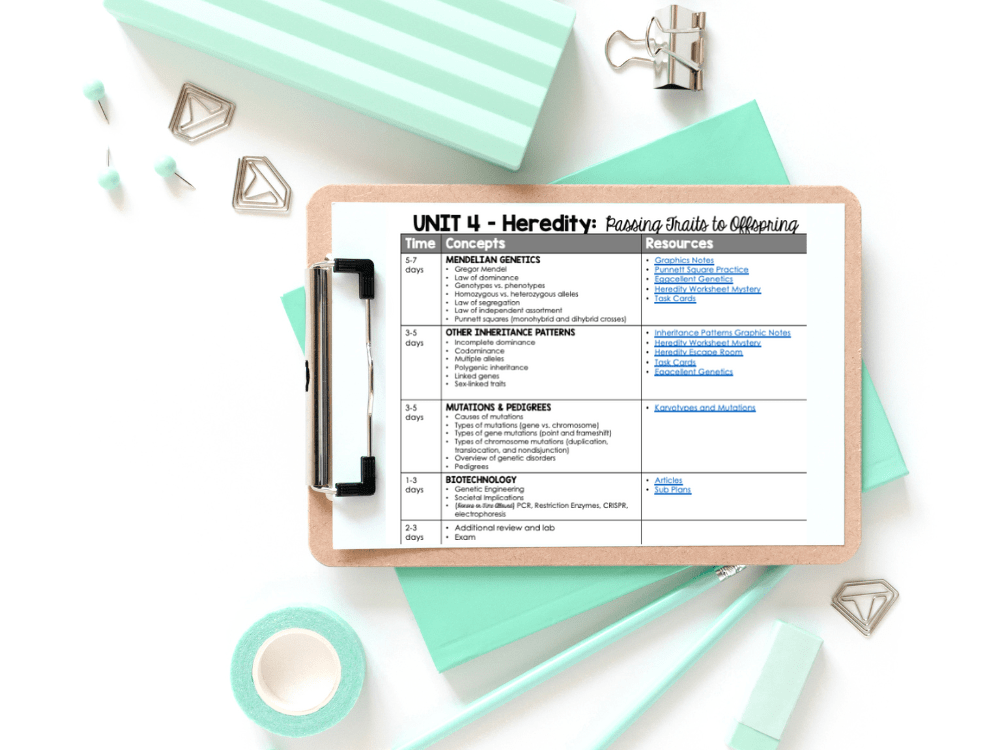
Biology Activities: More than Lab
This can be a topic of frustration in science teaching, but we often call things labs that aren’t really labs. I think that is totally okay. There is plenty of time to teach students how to find an essential question, create a hypothesis, design an experiment, test the hypothesis, collect and analyze the data, and present conclusions. In fact, each one of these steps is a skill that requires a lot of repetition to master. If we are just having students go through the steps of a process that we have predetermined, the argument is that isn’t true science or lab work. It isn’t AND that isn’t the point. The point of these hands-on explorations is to see the concepts in action and not become bench scientists.
Getting dirty with lab equipment isn’t the only way to to let kids explore. We work through labs, watch demonstrations, use learning stations and other activities where kids move around the room. For me, the goal is to get them learning and many kids need some movement, talking, or extra time. Building in student led learning is essential in my classroom.
Using Technology in the Biology Classroom
I love using technology in the classroom and is a requirement for most of us.
I love games where we can get the whole class involved and often use technology to do that. Sites like Kahoot or even interactive slide decks can be great for this. I like to mix it up between more technology heavy games AND good old games like Bingo or using dry erase boards.
Videos and animations are a tool that helps bring biology to life. Concepts like protein synthesis, metabolism, photosynthesis, and osmosis are so much easier to explain using animations and videos.
Using digital assignments is not going away. Using technology is a great way to get kids engaged. Make sure you are using high quality assignments and remember (for most students) putting pencil to paper has more impact for long term memory. I often pair digital assignments with a record sheet to get the extra input.
Looking for Ideas on the Order of Topics?
Grab the Scope & Sequence I use with Resource Ideas & MORE.
Building Review into Your Biology Lesson Plans
My students understanding of what it means to study and know the material well enough for a test seems to go down every year. I’m often told by students that they understand a concept, but they don’t have it memorized yet. What? The reality is that most of us have end of course testing to worry about and being able to read and understand the notes isn’t an option for that.
These are some of my favorite ways to build in review:
- Task Cards
- Sorting Cards
- Question of the Day
- Escape Rooms
- How does this relate?
- GAMES
- Case studies
- Anything can be used as review
I like my review to be low stakes. This gets higher participation and helps lower the stress level. If kids are in fight or flight, they aren’t learning. Lowering the stakes and making it fun helps make it more effective.
Creating a Culture of Critical Thinking
Asking Good Questions
Every teacher I know is trying to encourage questions and open discussions in the classroom. Have you ever had a student try to ask a question, but struggles to do it in a coherent way? This means we need more question time in our biology lesson plans. To help students ask engaging questions you can provide question stems and frameworks.
Ways to implement: You can hand students cards and ask them to write a question before class and take them up at the beginning of class and go over them. You can take those same cards and create a list of questions that you refer to over the entire unit. Questioning is a skill that we have to support them to develop.
Promoting scientific reasoning and evidence-based conclusions
I use claim-evidence-reasoning resources at the very beginning of biology so that students will get the chance to see the framework in action. We refer to this idea that the claim needs to be supported by evidence based reasoning throughout the year. Kids love mistakes and bloopers. The more scenarios that you can provide where there are errors in this path to critical thinking – the easier it will be for them to point it out for themselves.
Use experimental design and investigations as a tool in teaching critical thinking. Using questions to develop claims (hypothesis) and data to back up their reasoning is good for every student.
Adapting Lesson Plans in Biology
If there is anything we learned in 2020, it is the need to shift and stay flexible. Most of us now see the need to have plans that can be moved to alternative teaching settings like virtual or hybrid. Luckily, teachers have been modifying and adapting for a long time.
Adapting lessons and making modifications to meet the needs of the learners we have is one of the most difficult tasks educators face. This is an area I feel passionate about and continue to learn more and more. When I purchase resources, I look for things that are editable or easy to adapt. I’ve been adding more choice boards, word walls, and other teaching tools that help build an environment where students feel understood and met where they are. This is a work in progress.
Assessing Progress and Celebrating Success
I like lots of formative assessment. This lets me see where we need to spend more time and who needs a little extra work on a topic before the stakes get higher. I don’t like spending all of my time grading. I try to provide points for effort in formative assessments to make keeping up with the record keeping easier on me.
I like to ask questions. What made you come up with this answer? Could there be another explanation? What evidence did you use to come up with this answer? Are you finding it hard to remember the steps or the definitions?
Every person deserves celebration. Find out what is motivating and makes your kids happy and do that.
Teaching Biology isn’t just Lesson Plans
In my 20 years of teaching, I’ve made lots of mistakes. I hope that this post can be a reference for you to make the most of your classroom experience. There is no need to reinvent the wheel with your biology lessons. Try some of my ideas and let me know how they work. Remember that my way isn’t the right way. You have to find what works for you and the kids you teach.
